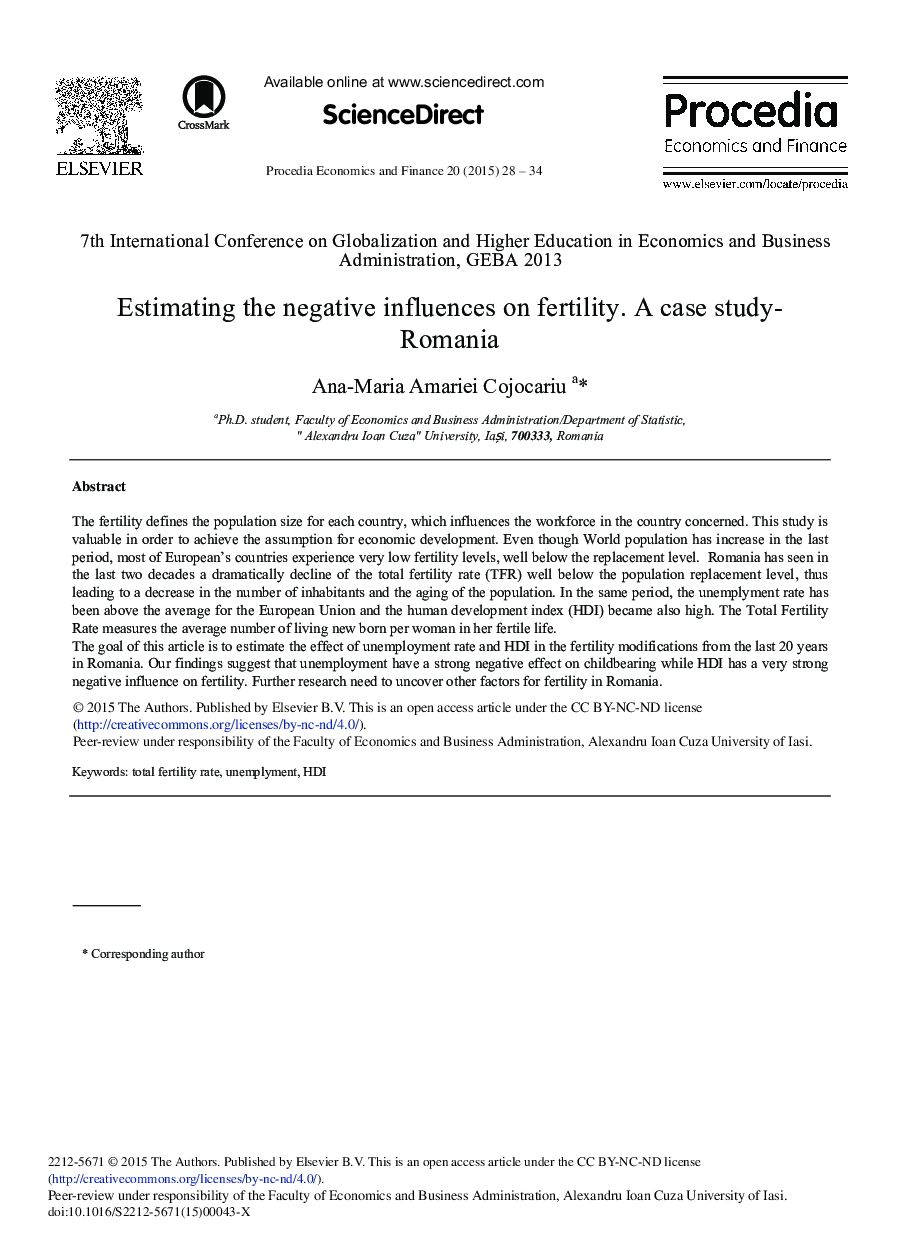| Article ID | Journal | Published Year | Pages | File Type |
|---|---|---|---|---|
| 980120 | Procedia Economics and Finance | 2015 | 7 Pages |
The fertility defines the population size for each country, which influences the workforce in the country concerned. This study is valuable in order to achieve the assumption for economic development. Even though World population has increase in the last period, most of European's countries experience very low fertility levels, well below the replacement level. Romania has seen in the last two decades a dramatically decline of the total fertility rate (TFR) well below the population replacement level, thus leading to a decrease in the number of inhabitants and the aging of the population. In the same period, the unemplyment rate has been above the average for the European Union and the human development index (HDI) became also high. The Total Fertility Rate measures the average number of living new born per woman in her fertile life.The goal of this article is to estimate the effect of unemployment rate and HDI in the fertility modifications from the last 20 years in Romania. Our findings suggest that unemployment have a strong negative effect on childbearing while HDI has a very strong negative influence on fertility. Further research need to uncover other factors for fertility in Romania.
